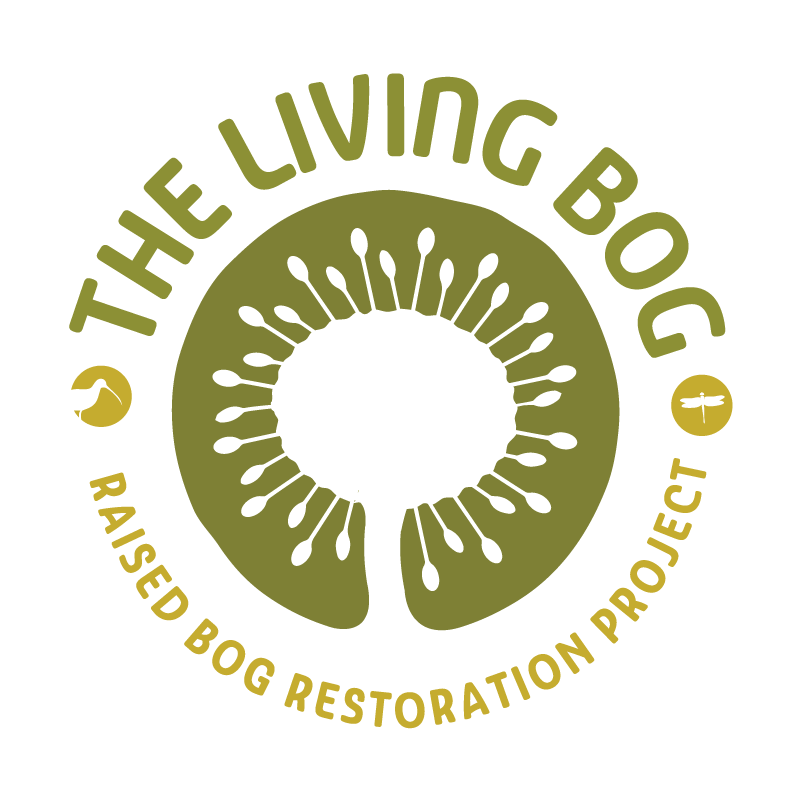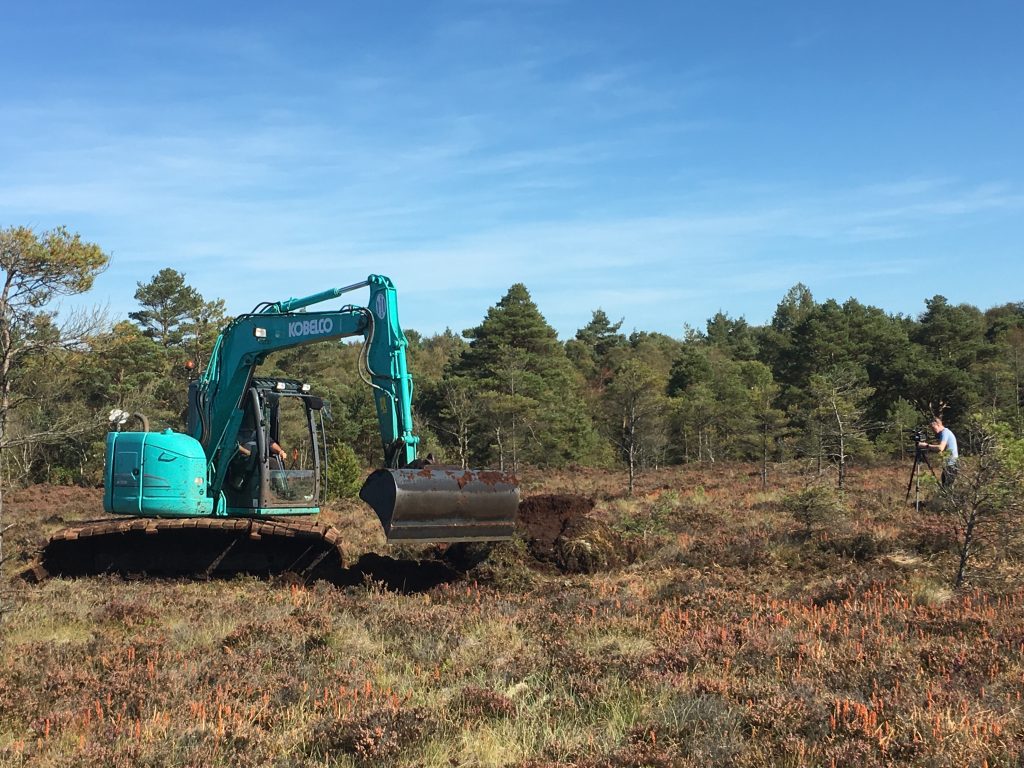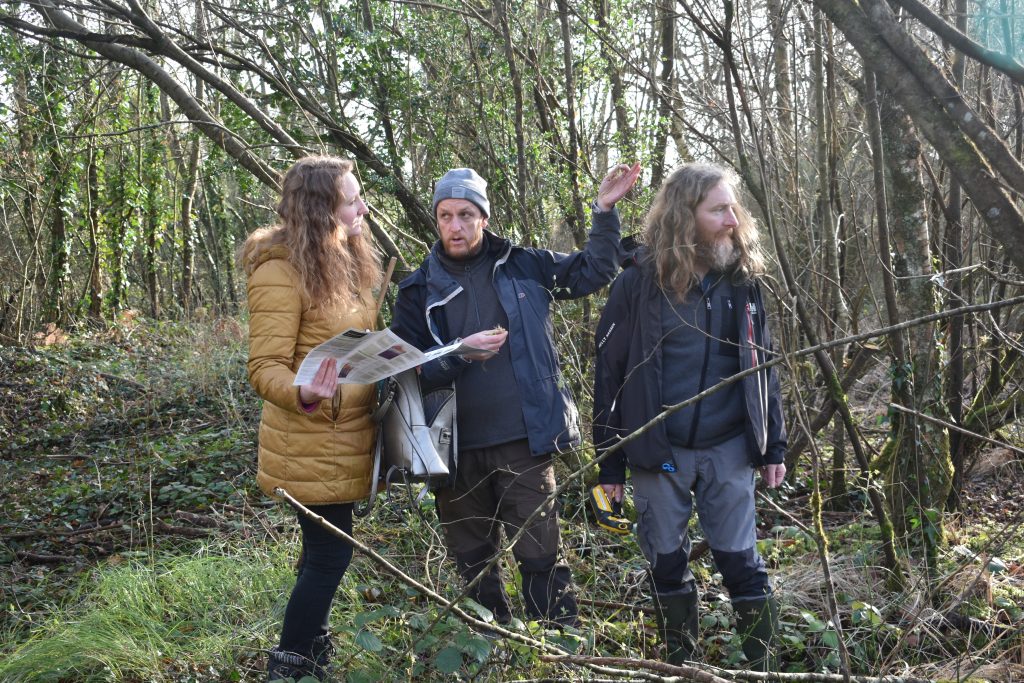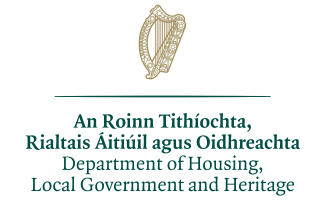Killyconny Bog SAC (also known locally as Cloghbally Bog and Mullagh Bog) is a 191 hectare raised bog just outside the historic Cavan town of Mullagh. It is an important bog which has played a big role in the local community for generations, and its location is unique as not only is it the most northern project site, but it is the only LIFE project site to share two counties: Cavan and Meath. It is said that the Apostle of Franconia, St Kilian, had connections to this impressive bog.
The bog has been at the centre of the local community for many decades, and it received widespread attention in the 1990’s when the local community came together to host three ‘Day on the Bog‘ festivals.
As the crow flies, the bog is approximately half-way between Virginia and Kells on the Cavan/Meath border. The bog was historically divided into five different townlands: Cloughbally; Fartagh; Leitrim; Killyconny; and Fegat.
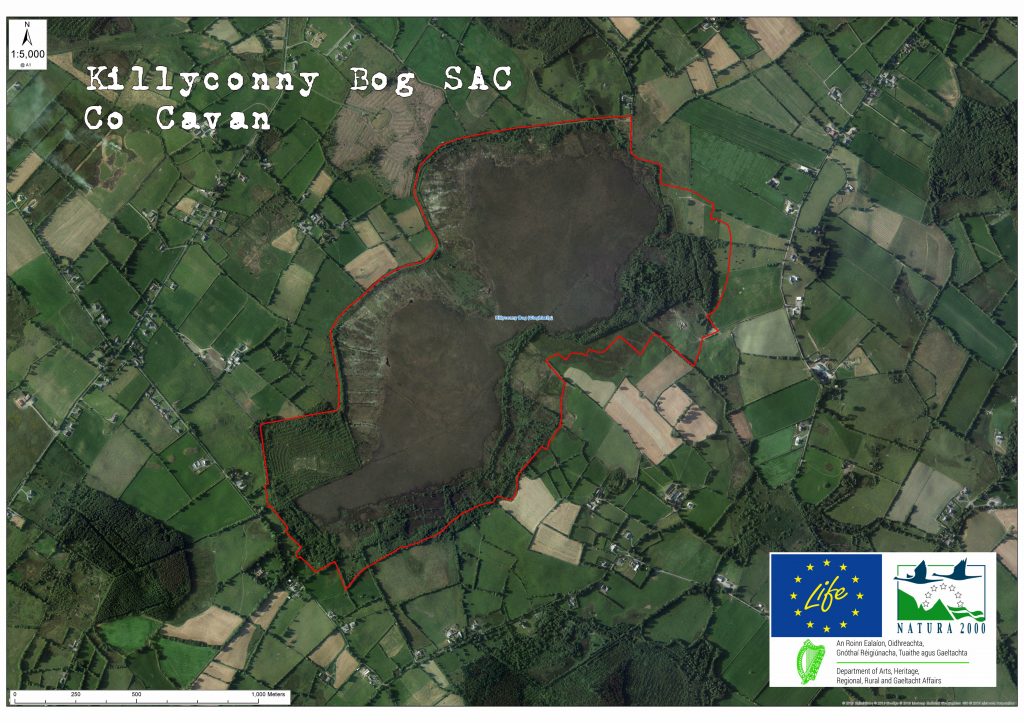
The hollows between the hills of this beautiful part of the country fostered many a raised bog, but today there are very few raised bogs left in the north-east region and Killyconny Bog is the best developed of what remains. It is unusual as it developed with two lobes formed on adjacent ancient lakes. As the bogs rose side by side over thousands of years, they spilled over towards each other. Today they are joined by a narrow strip of bog, with the bog an odd ‘figure of 8’ shape.
Though some marginal drainage and cutting has taken place and there is subsidence on the margins, the central parts of the bog are relatively intact as little drainage was ever done on the ‘high bog’. Some restoration works took part on this bog in the past (including LIFE project LIFE04 NAT/IE/000121) with favourable results. Overall, there are good restoration prospects on Killyconny and the project aims to almost treble the existing areas of Active Raised Bog (ARB) on the high bog through a restoration programme aimed at raising the water table.
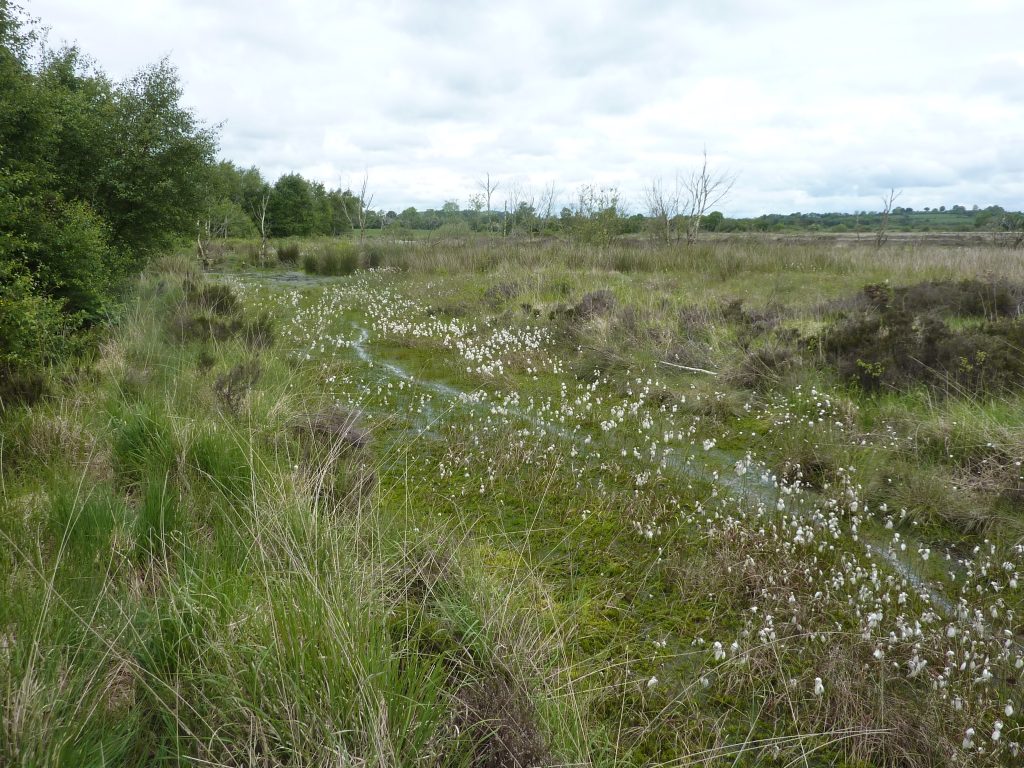
Water retention on Killyconny Bog, carried out as part of a previous restoration project on a section of the raised bog.
This bog is a Special Area of Conservation (SAC) selected for Active Raised Bogs 7110 and Degraded Raised Bog 7120 – habitats that are listed on Annex I of the EU Habitats Directive (992/43/EEC), where Active Raised Bogs 7110 is further ranked as a “priority” habitat. Depressions on peat substrates of the Rhynchosporion (EU code 7150) are also found here.
There is a tremendous community spirit in the environs of the bog. Killyconny has had a high amenity value for many years, from the ‘Mullagh Bog Day’ festivals of the 1990’s to present day walking routes around the bog. There are many fond memories locally of working on the bog in the hey-day of peat extraction by hand (see HISTORY page).
Mullagh town is one of Ireland’s hidden gems with enviable heritage and tourism assets. Every year thousands of tourists visit the area to celebrate the town’s links to St Kilian, the 7th and 8th Century Apostle of Franconia and Irish Missionary Bishop, who was born close to Killyconny Bog. The St Kilian’s Heritage Centre in the town is at the heart of everything that happens in the area, and is an ideal starting point to learn more about Killyconny Bog and this the surrounding area.
The current conservation objective for Ferbane Bog is to restore the area of Active Raised Bog to the area present when the Habitats Directive came into force in 1994. In the case of Active Raised Bog, the objective also includes the restoration of Degraded Raised Bog.
The Area objective for Active Raised Bog (all on the high bog) is 43.51ha – almost double the existing area of active raised bog.
Restoration works included the blocking of drains, the construction of over a thousand peat dams and the installation of a number of plastic dams. A drainage management plan and a fire management plan were also drawn up.
Restoration works began here in August 2019 and continued for just over 4 months. In all, some 1,129 peat dams were installed with a number of plastic dams also put in.
Planning permission for visitor facilitation at Ferbane was granted by offaly County Council in 2020. It is planned to commence work on visitor facilities to make this impressive bog more visitor friendly for locals and tourists alike in August 2021. Ferbane Tidy Towns and Gallen Community School in the town assisted greatly with the plans. As well as signs and notice boards, boardwalks, and a special Mary Ward discovery field for science and biodiversity projects, there will be improvements to existing paths and roads alongside parking and a community area.
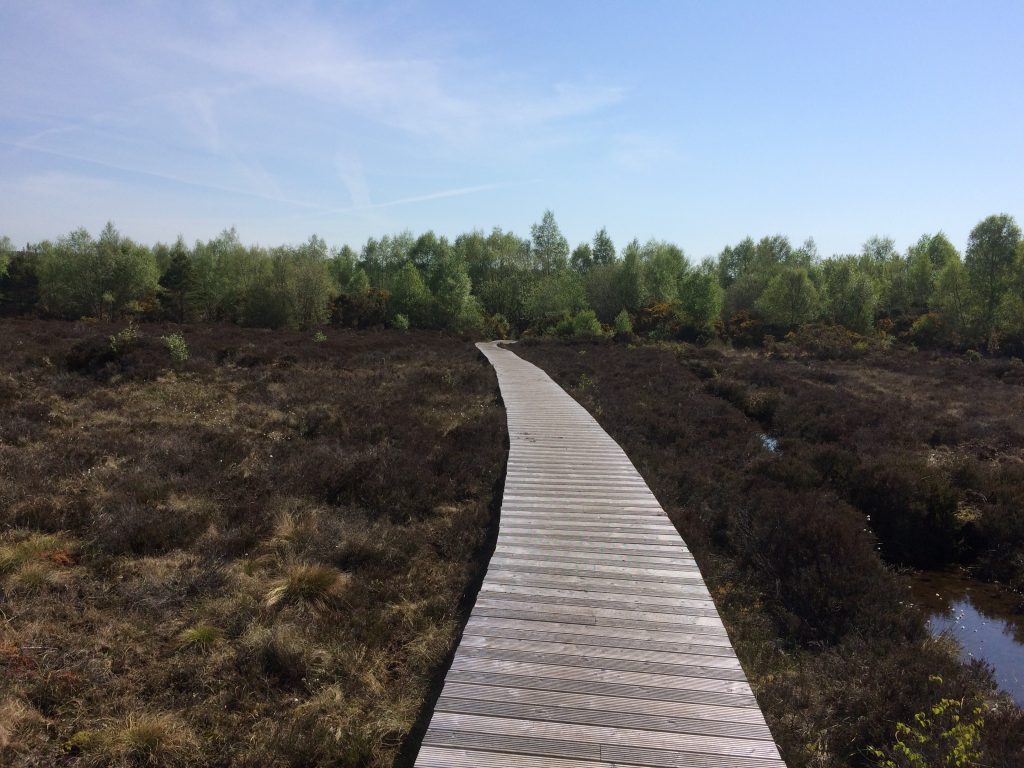
Boardwalks, such as this one in Co Laois, are an option to increase the amenity value of certain Irish raised bogs
OUT ON THE BOG
The objective in relation to Structure and Functions (S&Fs) is that at least half of the Active Raised Bog area should be made up of the central ecotope and active flush (i.e. the wetter vegetation communities). These values have been set as Favourable Reference Values.
Degraded Raised Bog still capable of regeneration should be, according to the interpretation manual, capable of regeneration to ‘active raised bog’ in 30 years if appropriate measures are put in place (i.e. no major impacting activities are present and any necessary restoration works are implemented).
In the past the habitat area was considered to be all high bog not considered to be active, but this is now not accepted as much of the high bog can no longer be restored to active (see DAHG 2014). The remaining non-active high bog is considered supporting habitat for the Annex I habitats on the high bog. This supporting habitat is an essential part of the hydrological unit necessary to support Active and Degraded Raised Bog habitats. The restoration of suitable cutover areas is essential for Active Raised Bog to achieve the favourable conservation condition at the site.
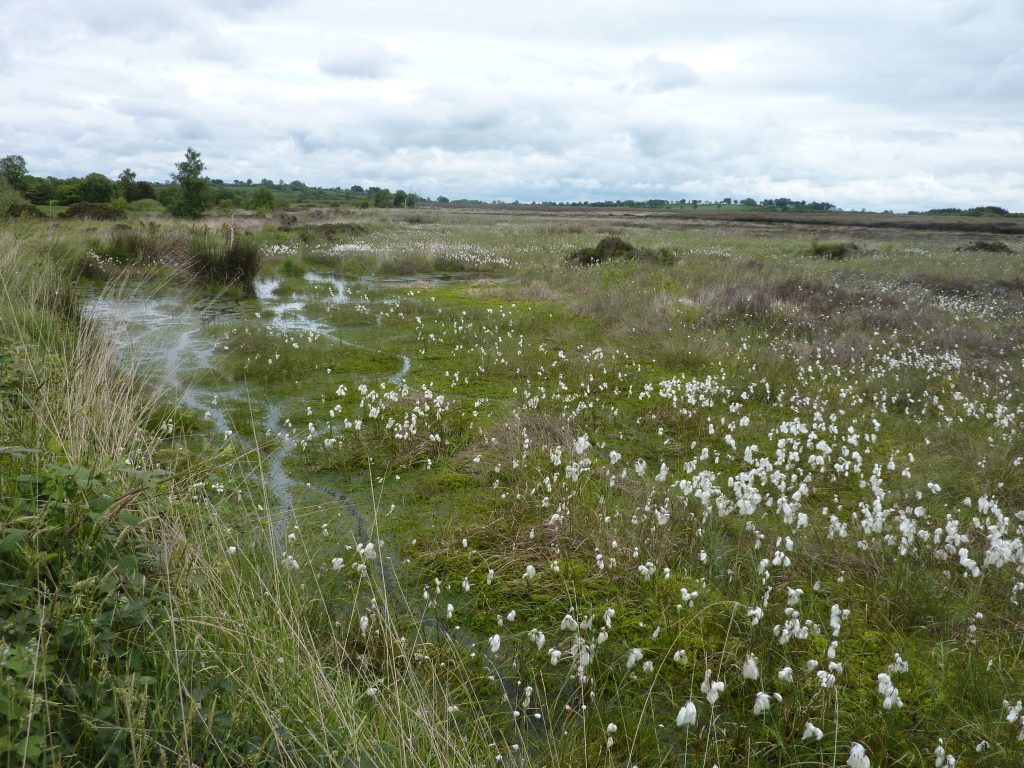
Cutover restoration at Killyconny Bog, Co Cavan.
Nevertheless it is acknowledged that a long period of time (i.e. over 30 years) may be needed after appropriate restoration works are undertaken on the cutover areas for the habitat to develop.
Restoration works along the western cutover of another of our project sites, Killyconny Bog SAC, by a previous LIFE project indicated the occurrence of pioneer ‘active raised bog’ vegetation 8 years after these were undertaken. Based on the close ecological relationship between Active Raised Bog, Degraded Raised Bog and Rhynchosporion depressions, it is considered that should favourable conservation condition for ‘Active Raised Bog’ be achieved on the site, then, as a consequence, favourable conservation condition for the other two habitats would also be achieved.
